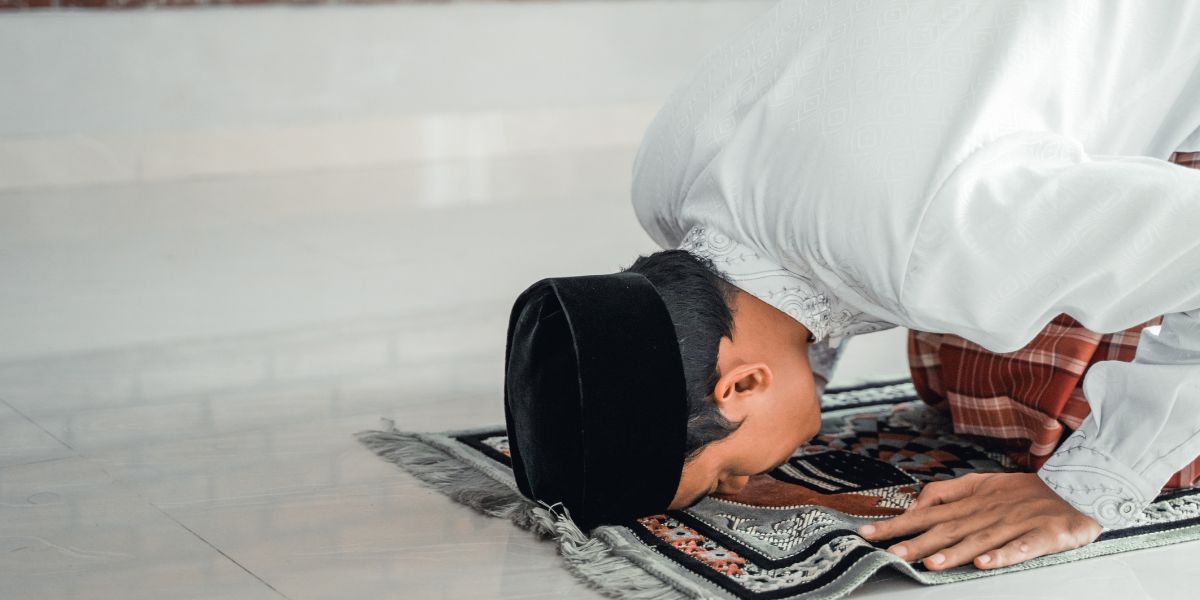5 Portraits of Park Bo Gum's Transformation, from Childhood to World-Famous Handsome Actor
Park Bo-Gum's transformation from a kid to now, it turns out he was already handsome since childhood

Kapanlagi.com - The Idul Adha prayer is a highly recommended sunnah worship for Muslims and is a moment eagerly awaited every year. Unlike obligatory prayers, this prayer is performed on the day of the Idul Adha holiday, specifically on the 10th of Dzulhijjah. However, what makes this prayer so special?
One of the frequently asked questions is, how many rakaat should be performed in this prayer? Generally, the Idul Adha prayer consists of two rakaat. Although it seems simple, there are several differences that make its execution unique. For example, the number of takbirs recited in each rakaat and the intention readings that differ between the imam and the makmum.
The Idul Adha prayer can be performed in congregation to experience togetherness, but if there are certain reasons, such as being late to join the congregation, this prayer can also be performed alone. In this article, we will discuss in depth the number of rakaat, intention readings, and the steps that need to be observed when performing the Idul Adha prayer.
The Eid al-Adha prayer, similar to the Eid al-Fitr prayer, consists of two rakaat filled with meaning. In the first rakaat, Muslims recite the takbir seven times before continuing with the recitation of Al-Fatihah and other surahs, while in the second rakaat, they say the takbir five times before continuing with the same recitation. This heartfelt takbir is one of the hallmarks of the Eid al-Adha prayer, marking a sacred moment full of blessings.
As narrated by Umar bin Khattab RA, the Eid al-Adha and Eid al-Fitr prayers are organized into two rakaat, a guideline immortalized in the hadith of An-Nasa'i: "The Friday prayer is two rakaat, the Eid al-Fitr and Eid al-Adha prayers are two rakaat," reminding us of the simplicity and grandeur of this worship.
The intention reading for the Eid al-Adha prayer is very important to recite before starting the prayer. There are differences in the intention reading between the imam, the congregation, and the person praying alone. Here are the intention readings according to each position:
Intention for the imam:
أُصَلِّيْ سُنَّةً لعِيْدِ اْلأَضْحَى رَكْعَتَيْنِ مُسْتَقْبِلَ الْقِبْلَةِ إِمَانًا لฌللِتَعَالى
Meaning: "I intend to pray the Eid al-Adha two rakaat facing the qiblah as an imam for Allah the Exalted."
Intention for the congregation:
أُصَلِّيْ سُنَّةً لعِيْدِ اْلأَضْحَى رَكْعَتَيْنِ مُسْتَقْبِلَ الْقِبْلَةِ مَأْمُمًا لฌللِتَعَالى
Meaning: "I intend to pray the Eid al-Adha two rakaat facing the qiblah as a congregation for Allah the Exalted."
Intention for the one praying alone:
أُصَلِّيْ سُنَّةً لعِيْدِ اْلأَضْحَى رَكْعَتَيْنِ مُسْتَقْبِلَ الْقِبْلَةِ لฌللِتَعَالى
Meaning: "I intend to pray the Eid al-Adha two rakaat facing the qiblah for Allah the Exalted."
To perform the Idul Adha prayer, there are several steps that need to be observed. Here are the guidelines for the prayer:
First Rak'ah:
Second Rak'ah:
After performing the Idul Adha prayer, this blessed moment is usually followed by a distinctive sermon. Unlike the Friday sermon that is delivered before the prayer, on the day of Idul Adha, the sermon is delivered after the prayer, in accordance with the example of the Prophet Muhammad (SAW).
The Prophet Muhammad (SAW) demonstrated this method, and the hadith narrated by Abu Said al-Khudzri (RA) explains, "The Prophet Muhammad (SAW) came out on the days of Idul Fitri and Idul Adha, the first thing he did was pray, and only then did he give the sermon."
Q: Is the Idul Adha prayer required to be performed in congregation?
A: Although the Idul Adha prayer is highly recommended to be performed in congregation, it is still valid if performed individually (munfarid), especially if one arrives late to the mosque.
Q: Is there a specific time to perform the Idul Adha prayer?
A: The Idul Adha prayer can be performed from sunrise on the 10th of Dzulhijjah until just before the time for Zuhur.
Q: What distinguishes the Idul Adha prayer from other prayers?
A: The main difference lies in the number of takbirs, the intention recitation, and the specific sequence of the prayer, which includes additional takbirs in each unit (rakaat).
(kpl/rmt)
Cobain For You Page (FYP) Yang kamu suka ada di sini,
lihat isinya
Park Bo-Gum's transformation from a kid to now, it turns out he was already handsome since childhood
Discover 5 Korean detective thriller dramas with exciting storylines that will keep you on the edge of your seat!
Get inspired by meaningful and prayer-filled Idul Adha captions to share on your social media! With messages about sacrifice and calls for forgiveness, these captions will add depth and warmth to your Idul Adha celebration.
A complete guide on how to easily withdraw PIP funds 2025 through ATM or the distributing bank teller.
Ashanty and Anang share intimate moments during their vacation in Monaco, with stunning views and happiness together.
At the age of 44, Wulan Guritno still looks young and beautiful. With a healthy lifestyle, self-care, and natural beauty, she radiates timeless charm.
Dilraba Dilmurat, a Chinese actress of Turkish descent, looks stunning in floral pajamas and an elegant black dress.
Rachel Vennya, Fuji, and Erika Carlina are always united and appear together on various occasions.
Zhang Linghe, a Chinese actor who once studied Electrical Engineering, is now a star of popular Chinese dramas.
Ery Makmur shares the story of losing 30 kg in 10 months.
Nikita Willy vacationed in the great outdoors, swinging and seeing pony horses with her beloved family.